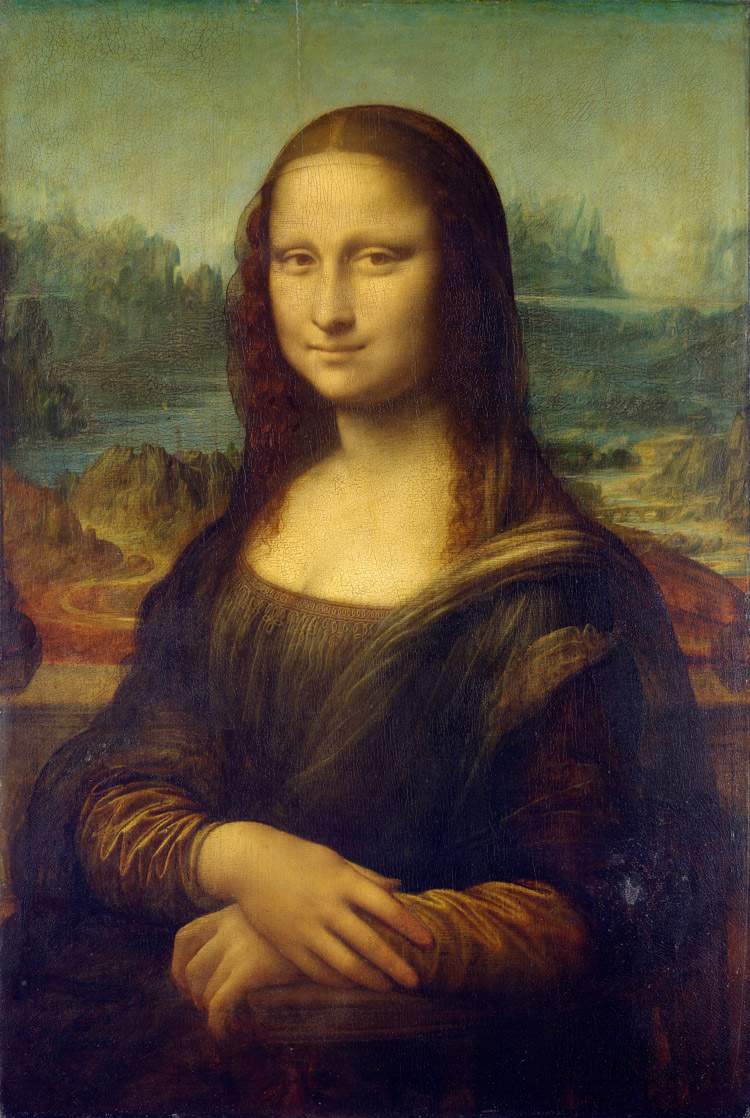Whenever the subject of Leonardo da Vinci ’s paintings preserved in the Louvre in Paris comes up, there is always someone who pops up saying that " France should give them back to Italy,“ ”the Mona Lisa was stolen by Napoleon," and so on and so forth, in an unpalatable mix of boorish nationalism and lack of knowledge of how things happened. It is well known that the Mona Lisa (as well as other works by Leonardo preserved in the Louvre) was not stolen during the Napoleonic spoliations. In fact, the painting has been in France since 1517. We know this from a writing by Canon Antonio de Beatis, secretary to Cardinal Louis of Aragon: Antonio de Beatis had traveled to France in the cardinal’s retinue and, in his “travel diary,” noted the meeting between Leonardo da Vinci and Louis of Aragon: “el signore (Luigi d’Aragona, nda) con noi altri andò ad videre messer Lunardo Vinci firentino, vecchio de più de LXX anni, pictore in la età nostra eccellenti, quale most excellent, che most illustrious Signoria most illustrious showed his Lordship three quatri, uno di certa donna firentina, facto di naturale, ad instantia del quondam magnifico Iuliano de Medici, l’altro di san Iohanne Baptista giovane, et uno de la Madonna et del figliolo che stan posti in gremmo de sancta Anna, tucti perfecissimi.”
The annotation is dated October 10, 1517, and the paintings, starting with the last one, are the Madonna and Child with St. Anne, St. John the Baptist, while the first one is probably the Mona Lisa, a painting that, in any case, already figures in the collections of Francis I of France from the following year, 1518: it is conceivable that the work, together with other paintings that Leonardo had brought with him to France from Italy, had been sold to the king by Gian Giacomo Caprotti known as the Salaì, one of Leonardo’s pupils. However, it is certain and incontrovertible that the king of France turns out to be the owner of some paintings, including the Mona Lisa, in 1518 (although we do not know how it was acquired): therefore, these paintings legitimately belong to France. So why are there still those who claim that the Mona Lisa was stolen by Napoleon and clamor for its return to Italy?
 |
| Leonardo da Vinci, The Mona Lisa (c. 1503-1513; oil on panel, 77 x 53 cm; Paris, Louvre) |
In fact, there is a definite connection between Napoleon and the Mona Lisa: in fact, it seems that Napoleon particularly loved Leonardo’s painting, so much so that in 1800 he took it to the Tuileries Palace, his residence at the time, to hang it in the rooms of his wife Joséphine (there are many art historians who report this). The Mona Lisa would later become part of the collections of the Louvre, which at the time was called the Musée Napoléon, in 1804. This anecdote, coupled with the fact that the Louvre’s collections were actually nurtured thanks to the thefts carried out by Napoleon’s soldiers on Italian soil, probably contributed to the rumor that the painting was indeed stolen by Napoleon. It was a rumor spread long ago: it certainly circulated as early as 1911, the year of the theft of the Mona Lisa by Vincenzo Peruggia (more on that here), an Italian painter who worked at the Louvre for a time. The theft was motivated by, so to speak, “patriotic” reasons: Peruggia was convinced that the Mona Lisa was part of the paintings stolen by Napoleon, and he wanted to steal it to return it to Italy. By the way, interestingly, the painting in the Louvre that stands on the wall opposite the one where the Mona Lisa is displayed, namely Paolo Veronese’s Wedding at Cana, is a work that was really shipped to France during the Napoleonic spoliations, in 1797 to be exact.
But that is not all: it is also not true that Napoleon did not steal any of Leonardo da Vinci’s works. This is the case with the Codex Atlanticus, the largest existing collection of drawings and writings by the great Tuscan artist: in 1796, Napoleon requisitioned the Codex, which was displayed in the Louvre until 1815. It returned to Italy thanks to the work of Antonio Canova, who was commissioned by the Papal State to bring back to Italy the works owned by the Church that had been stolen during the Napoleonic spoliations and for which the Papal State had demanded restitution. The Codex Atlanticus was then included in a list of assets to be returned to the Biblioteca Ambrosiana, its rightful owner: the work was able to return to Italy and today is once again part of the Library’s patrimony. It is, however, the only Leonardo codex returned to Italy of those stolen.
It was thus a series of anecdotes and historical facts that really happened (and certainly misrepresented) that spread the hoax of the Mona Lisa stolen by Napoleon. We have seen that the connections between the one who was the emperor of the French and Leonardo’s most famous masterpiece are different. But this does not mean that the Mona Lisa should be returned to Italy since, we repeat, it is rightfully the property of France following a purchase in 1518 by King Francis I.
Reference bibliography
Warning: the translation into English of the original Italian article was created using automatic tools. We undertake to review all articles, but we do not guarantee the total absence of inaccuracies in the translation due to the program. You can find the original by clicking on the ITA button. If you find any mistake,please contact us.